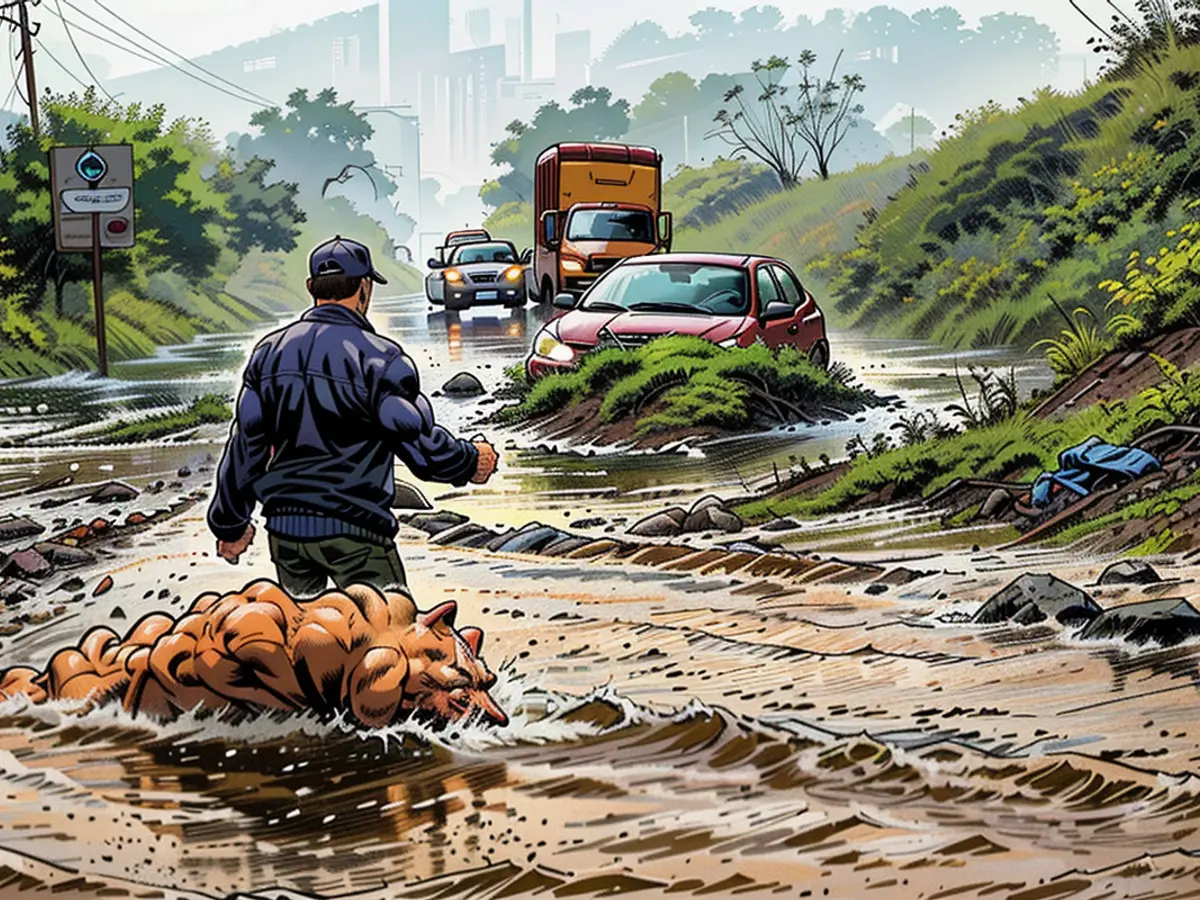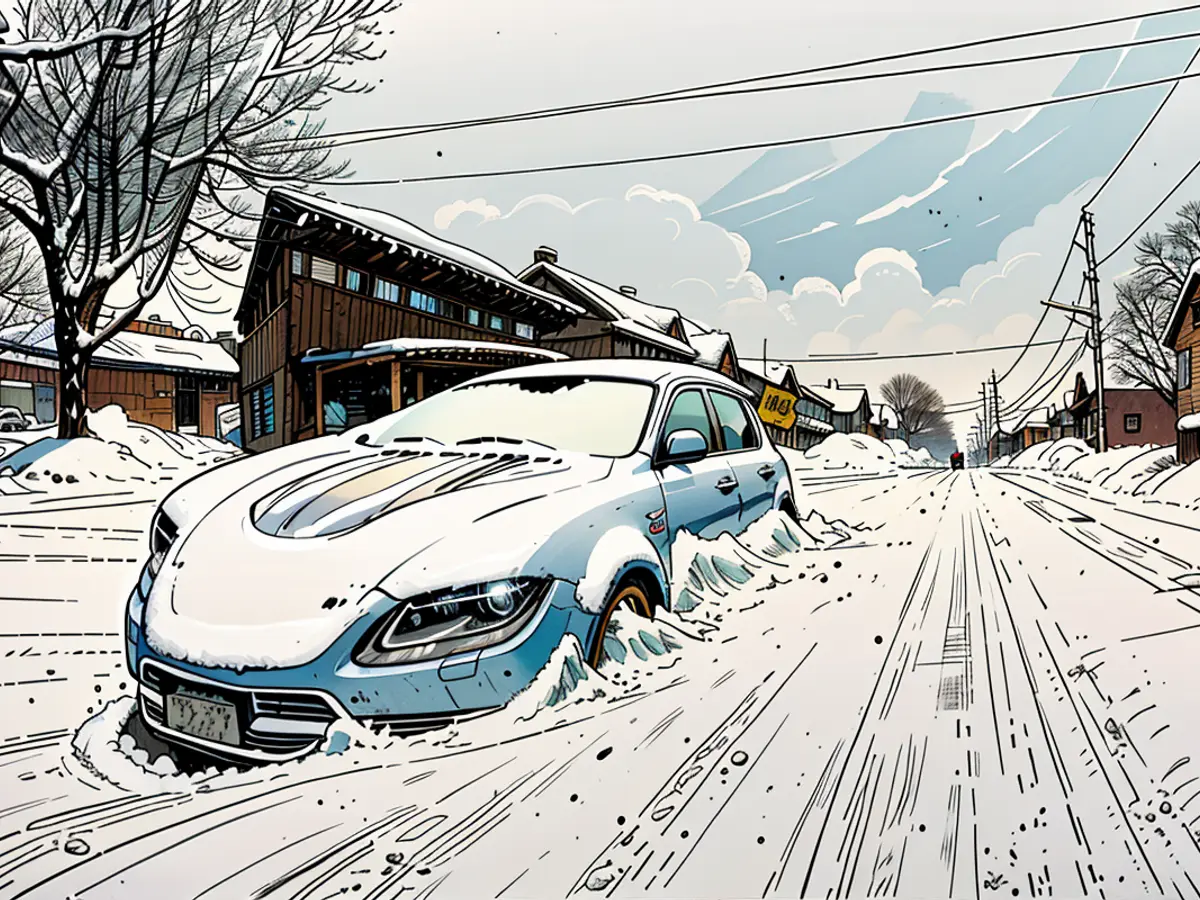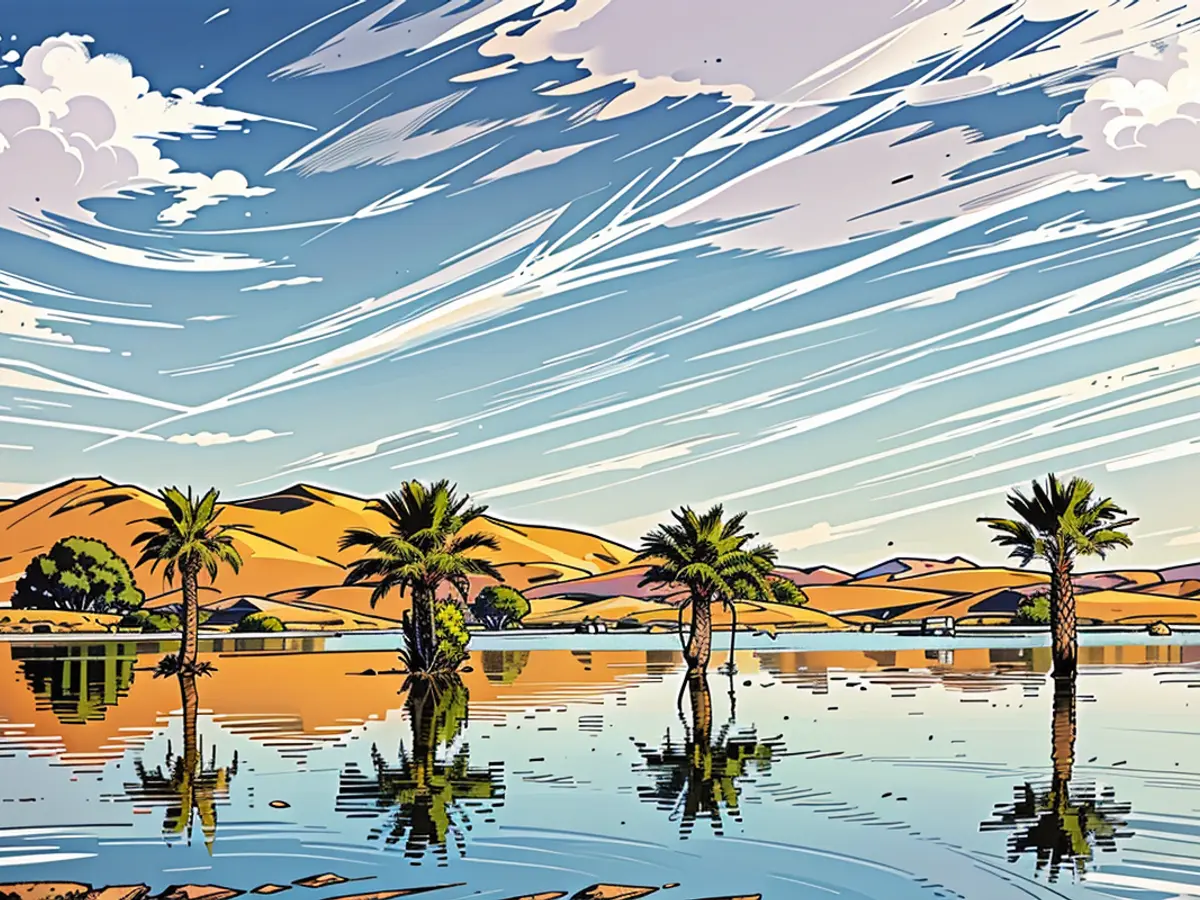Table of contents
- What are the ingredients for a white Christmas?
- What about regional differences?
- Is Grandpa right - did Christmas used to be white more often?
- When was the last time Germany had a white Christmas?
- Is Christmas just at the wrong time?
- What will happen in times of climate change?
Questions and answers - What are the chances of a white Christmas this year?
For many people, a white Christmas is the ideal. The blanket of snow radiates tranquillity, nature seems to be in hibernation - a scenario that fits in well with Christmas, which is supposed to be a time for reflection. However, snow-covered landscapes on Christmas Eve and the holidays were an exception in Germany even before climate change due to a certain weather phenomenon. This year doesn't look particularly good either. A sustained snow cover down to the lowlands is rather unlikely, explained Marcel Schmid from the German Weather Service (DWD) in Offenbach on Monday. And what about the future?
Claim: There will never be another white Christmas in this country.
Assessment: Unlikely - but the chances are actually decreasing.
Facts: Older people in particular often romanticize the past. They like to claim that there used to always be snow at Christmas. Is that really true?
There is no official definition of a "white Christmas", but the DWD defines it as when at least one centimeter of snow is measured at a weather station in the morning on 24, 25 or 26 December. Answers to the most important questions.
What are the ingredients for a white Christmas?
According to the DWD, a white Christmas is a rarity in large parts of Germany, at least if you don't live in the higher low mountain ranges or on the edge of the Alps. "A lot has to come together", says DWD climate expert Karsten Friedrich about the snow cover over the holidays. There has to be enough cold and moisture.
The problem: cold air coming from the north or north-east is usually dry and does not bring precipitation. Milder air from the west often brings moisture, but rarely snow. So the mix in the weather kitchen has to be right. This was recently the case at the beginning of December.
What about regional differences?
Whether there is a higher probability of snow at Christmas also depends on where you live in Germany. Generally speaking, the higher up you live, the more likely it is that there will be snow on your doorstep at Christmas. However: in some years, such as most recently in 2022, it wasn't even enough for a white Christmas in the Alps, Friedrich recalls.
If you never want to see snow at Christmas, you should go to the sea, advises the weather expert. Because the North Sea and Baltic Sea still store heat from the summer in December, it is usually milder on the coast.
Is Grandpa right - did Christmas used to be white more often?
The probability of a white Christmas in Germany's lowlands has never been particularly high, but it was certainly higher in Grandpa's youth than it is now. This is according to an analysis of the National Meteorological Service's climate archive: a comparison of the reference periods 1961-1990 and 1991-2020 shows that the chance of snow cover on all three Christmas days has decreased by more than 50 percent overall.
An example from southern Germany, once spoiled by snow, makes this clear: in the Bavarian capital of Munich, there was still a white Christmas about every three years in 1961-1990, whereas in 1991-2020 this only occurred about every seven years.
When was the last time Germany experienced a white Christmas?
The last time there was a widespread white Christmas in Germany was in 2010. According to the DWD, 13 years ago the snow cover was still patchy on the morning of December 24, but "by Christmas Eve, fresh snow ensured a blanket of snow across Germany". Such more or less blanket white Christmases are rare.
There have only been four such occasions since the 1960s - before 2010 in 1962, 1969 and 1981.
Is Christmas simply at the wrong time?
It's the same almost every year: the so-called Christmas thaw sets in shortly before the festive season, which the DWD describes in detail in its lexicon. Mild Atlantic air flows in from the west, sometimes bringing rain with it. Previously fallen snow disappears. According to the DWD, the "infamous Christmas thaw" is one of the so-called singularities - also known as weather regularities - and occurs with a probability of up to 70 percent, depending on the region.
This means that Christmas comes at the wrong time. "The probability of snow is highest in the height of winter," says Friedrich, referring to the month of January.
What will happen in times of climate change?
Climate researcher Valeri Goldberg from TU Dresden calls the period since 2010 the "longest continuous period of years with green Christmas holidays since weather records began". This refers to the Saxon state capital in the years 1884 to 2021.
This "suggests the influence of global warming". There is a connection between the warming of the atmosphere and oceans and the decreasing frequency of white Christmases in Central Europe, writes Goldberg. The probability of snowy weather in winter is decreasing - especially in the lowlands. This is because frosty and moist air masses from the polar region would first have to reach Central Europe.
Climate projections show a warming of winters in Central Europe by the end of the 21st century, usually by three to four degrees on average and up to 5.5 degrees at the peak. It can be assumed that a white Christmas will then "become a very rare event", predicts climate researcher Goldberg.
Read also:
- While the railroads are on strike: weather service warns of "danger from black ice" in many parts of Germany
- Slippery roads, canceled flights - snow chaos paralyzes Bavaria
- Between winter wonderland and traffic chaos: how the first snow weekend went in Germany
- Weather situation in southern Germany eases, but air and rail traffic still disrupted
- Despite the romanticized past, Grandpa's claims of frequent white Christmases in his youth in Germany's lowlands are not entirely accurate. An analysis of the National Meteorological Service's climate archive shows that the chance of snow cover on all three Christmas days has decreased by over 50% since the 1960s.
- In Offenbach, Marcel Schmid from the German Weather Service (DWD) explained that while a white Christmas is a rarity in large parts of Germany, a sustained snow cover down to the lowlands is rather unlikely this year due to climate change.
- On Saint's Eve, dogs and their owners might be disappointed to find no 'snow cover' in their yards in Germany, as Marcell Schmid predicts a mild holiday season. This could make the future Christmases less idyllic, with fewer opportunities for dogs to frolic in the snow.
- As climate change continues, the probability of a white Christmas in Central Europe is decreasing, with Valeri Goldberg, a climate researcher from TU Dresden, predicting that a white Christmas will become a very rare event by the end of the 21st century.
- Regardless of the weather, holiday celebrations continue, much like in Offenbach, Germany, where festive activities on Saint's Eve and Christmas will not be affected by the lack of snow cover, although it may not be the classic white Christmas that many are used to.
Source: www.stern.de








